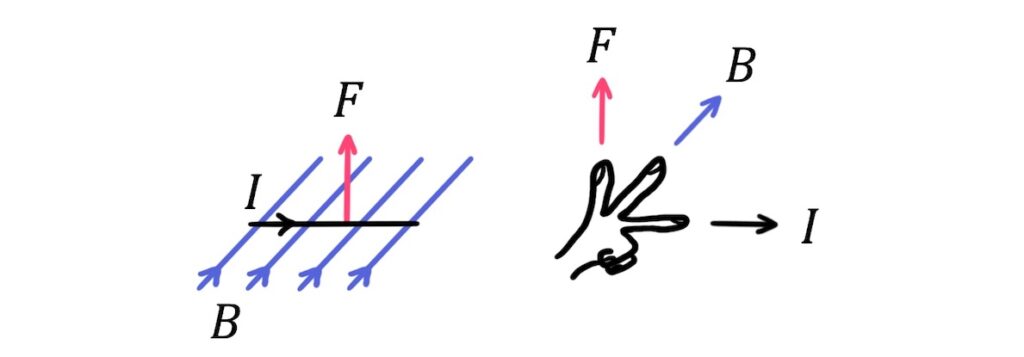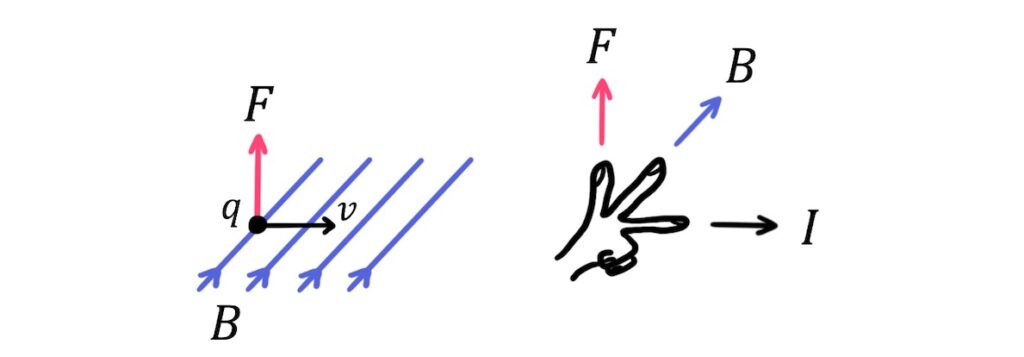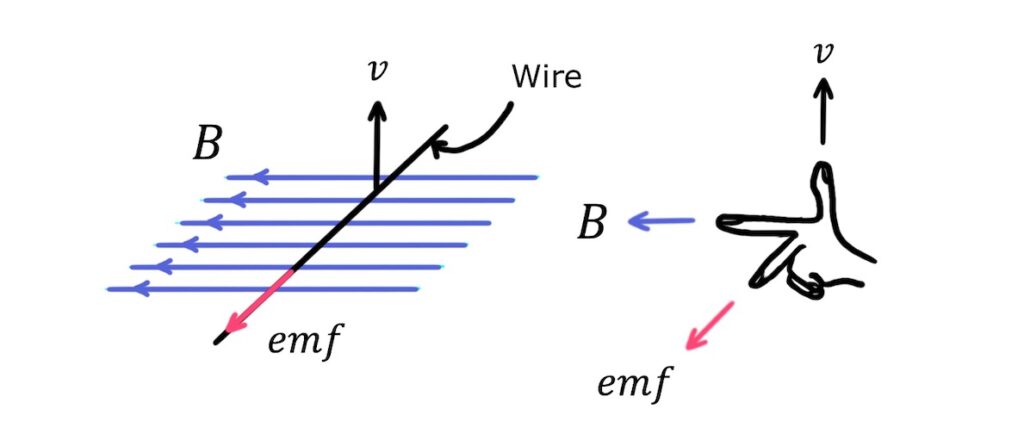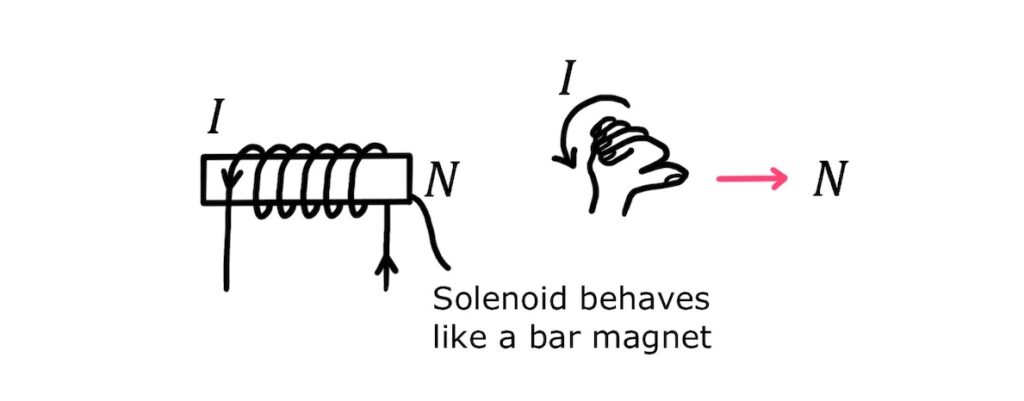Contents
Introduction
The magnetism hand rules are helpful for working out the directions and polarities of currents and magnetic fields. They simplify some complex phenomena, making them much easier to remember.
They are also why us physicists are known for making hand gesticulations during exams ;)
Let’s begin!
Fleming’s left hand rule for motors
Fleming’s left hand rule tells us the direction of the force experienced by a current-carrying wire in a magnetic field.
With your left thumb, forefinger and middle finger at right angles to each other, point your forefinger in the direction of the magnetic field and your middle finger in the direction of the current. Your thumb will then be pointing in the direction of the force!

Since current is the flow of charge, the left hand rule also works for a charge moving in a magnetic field.

Current is in the direction of the velocity of the positive charge. If the charge is negative, the current is in the opposite direction to its velocity.
Fleming’s left had rule is for motors because the force on a current-carrying wire in a magnetic field can be used to drive a motor. When the rule is applied to a moving charge, it can be used to predict the trajectory of a charged particle in a magnetic field, which is very helpful in particle physics.
Fleming’s right hand rule for generators
Fleming’s right hand rule tells us the direction of the emf induced in a moving wire in a magnetic field.
With your right thumb, forefinger and middle finger at right angles to each other, point your forefinger in the direction of the magnetic field and your thumb in the direction of velocity of the wire. Your middle finger will then be pointing in the direction of the induced emf!

Fleming’s right hand rule is for generators because the emf induced in a moving wire in a magnetic field can be used to produce electricity.
Ampère’s right hand grip rule for a current-carrying wire
Ampère’s right hand grip rule tells us the direction of the magnetic field around a current-carrying wire.
With your right fingers curled and your right thumb pointing into a “thumbs up” gesture, point your right thumb in the direction of the current in the wire. Your fingers will then be curled in the direction of the magnetic field!

Ampère’s right hand grip rule helps us understand the current-carrying wire as the source of a magnetic field.
Ampère’s right hand grip rule for a current-carrying solenoid
Ampère’s right hand grip rule also tells us the magnetic polarity of a current-carrying solenoid. A solenoid is essentially a coil of wire, and when a current flows through it, it produces a magnetic field in such a way that it behaves like a bar magnet. Just like a bar magnet, the current-carrying solenoid has a polarity that tells us which end is north and which end is south.
With your right fingers curled and your right thumb pointing into a “thumbs up” gesture, direct your curled fingers in the same direction as the current that flows through the turns of the solenoid. Your thumb will be pointing towards the solenoid’s north!

Solenoids have cool applications in engineering because they can produce strong magnetic fields when a current flows. They are even used in particle accelerators to bend and focus the trajectories of charged particle beams.
Conclusion
I hope you’ve enjoyed this quick revision of the magnetic hand rules! These rules summarise complex phenomena relating to motors, generators and sources of magnetic fields, making them much easier to remember.
It’s worth knowing these rules inside-out so you can use them with confidence to solve magnetism problems. They will even help you pick up easy marks in the exam.
Happy studying!
